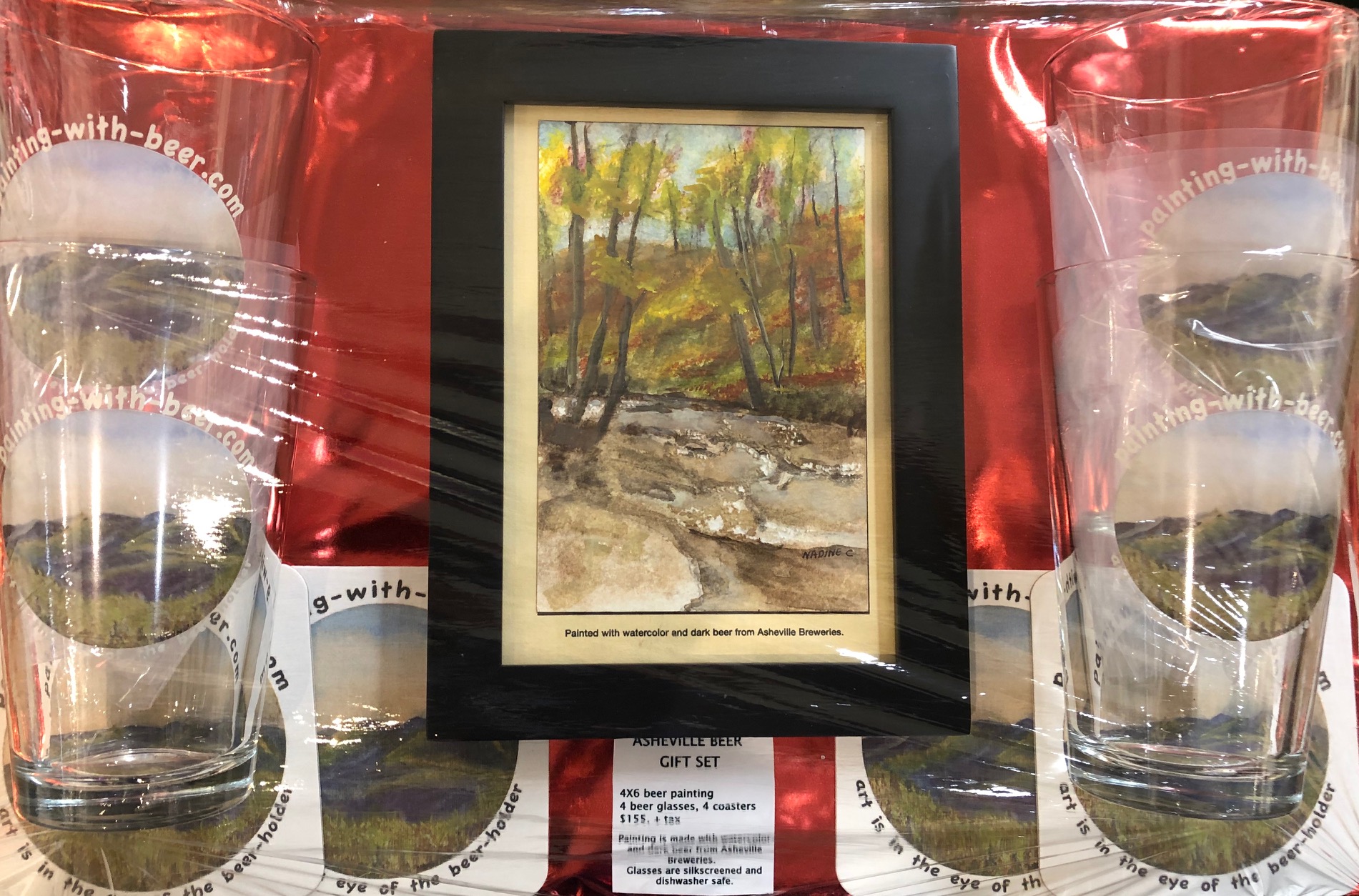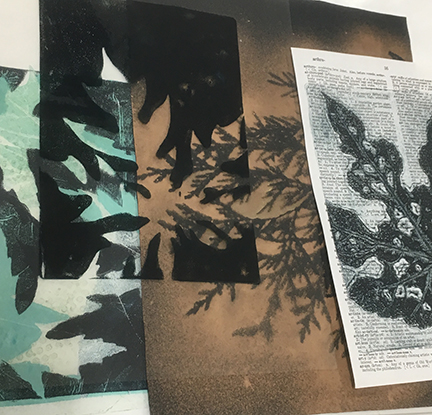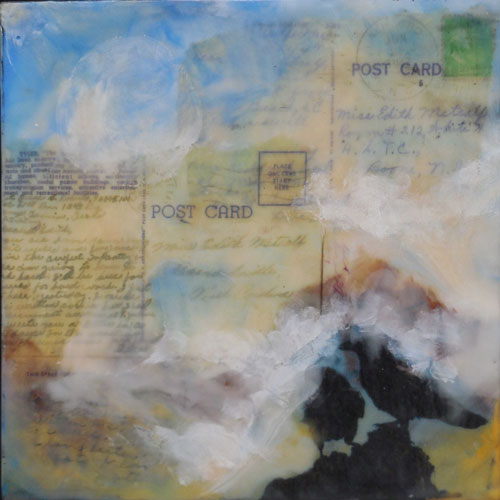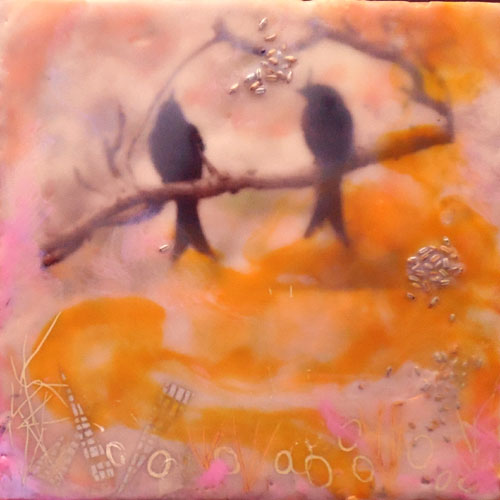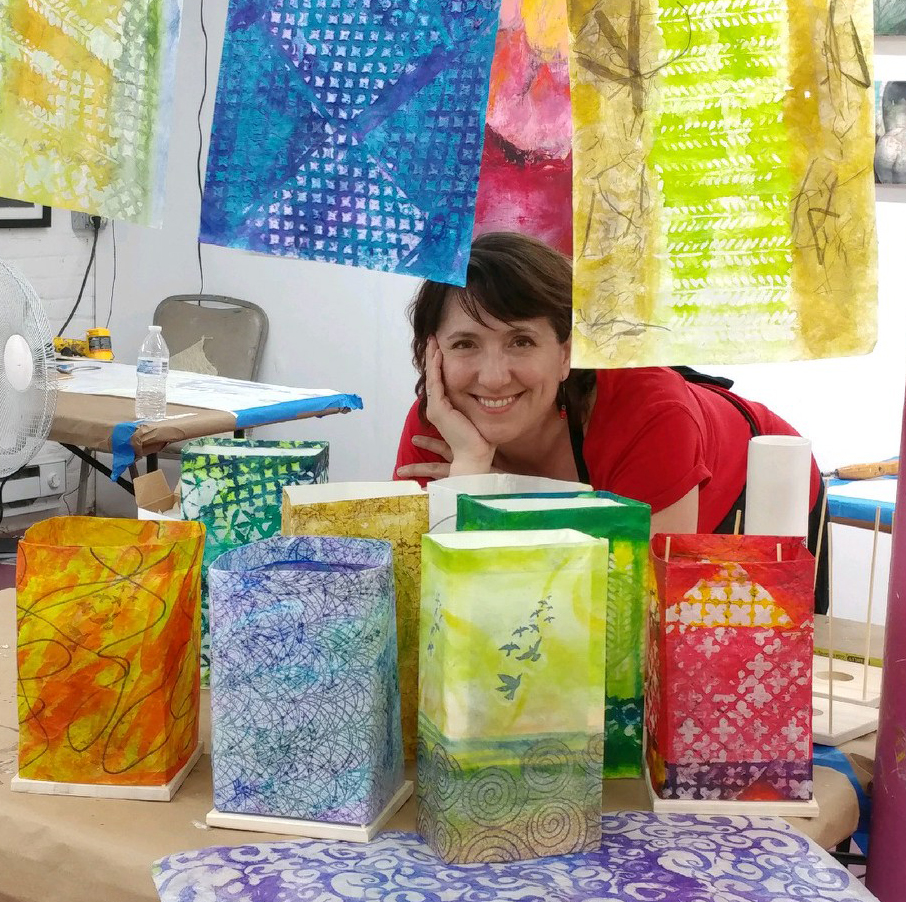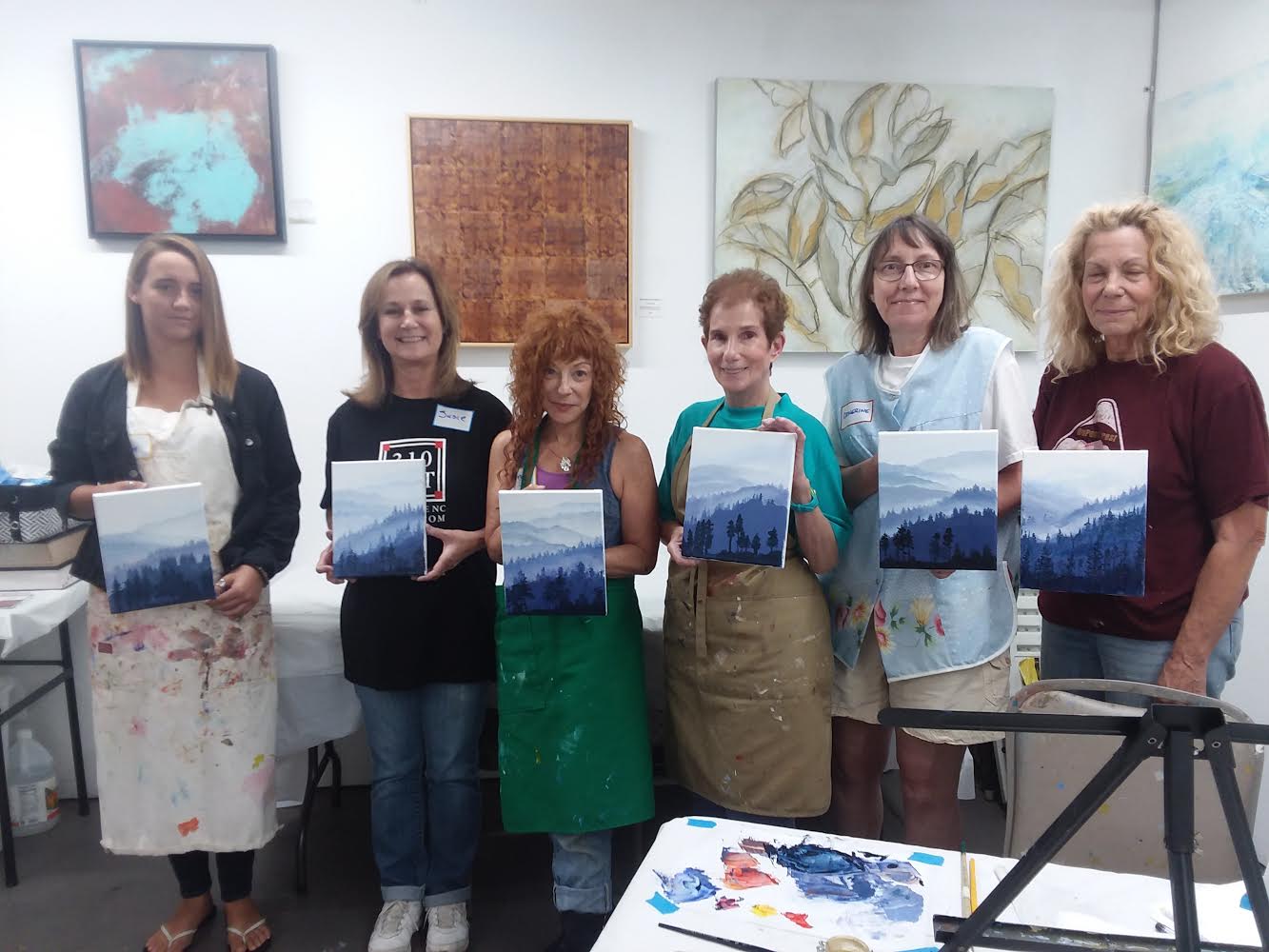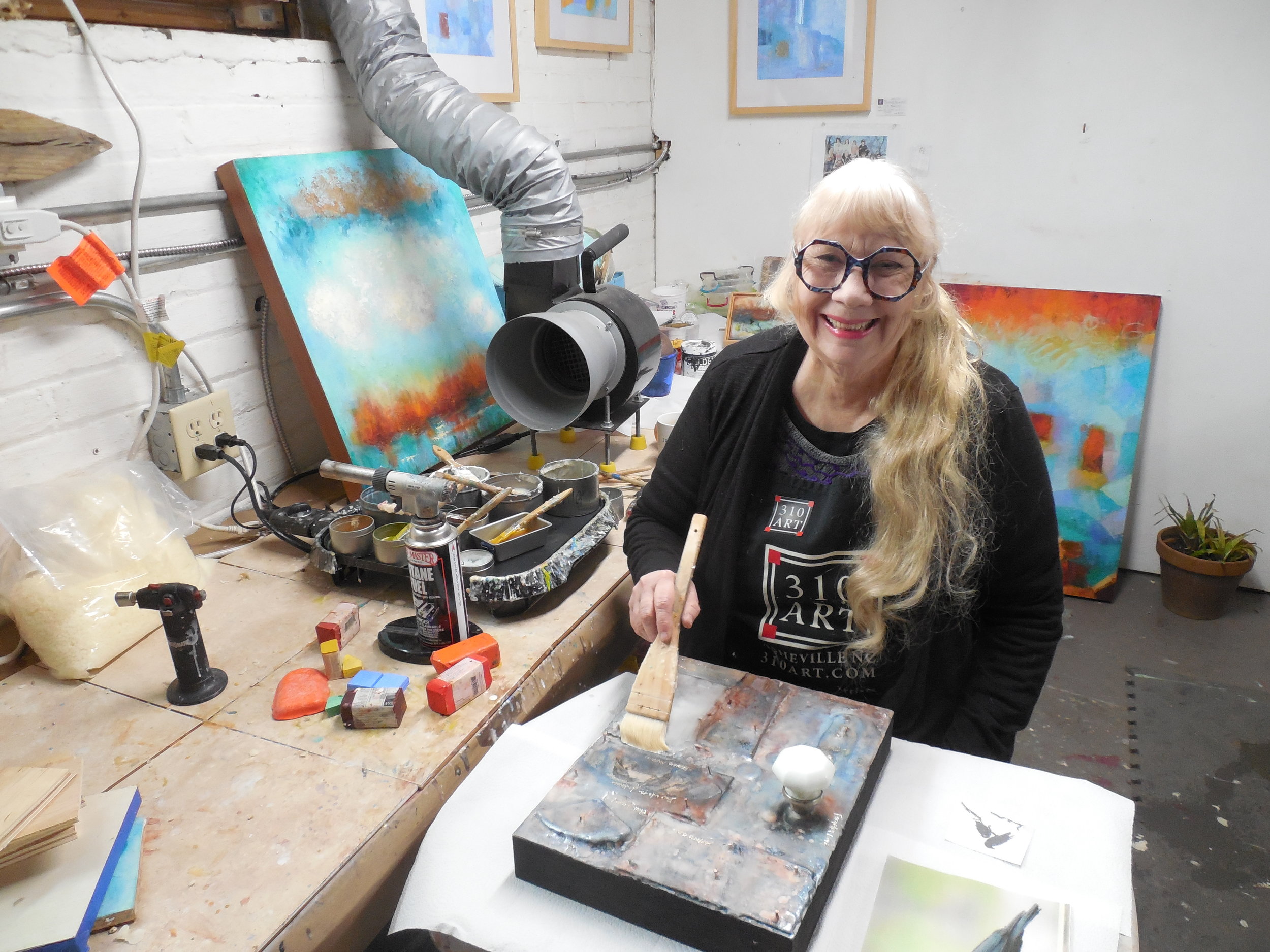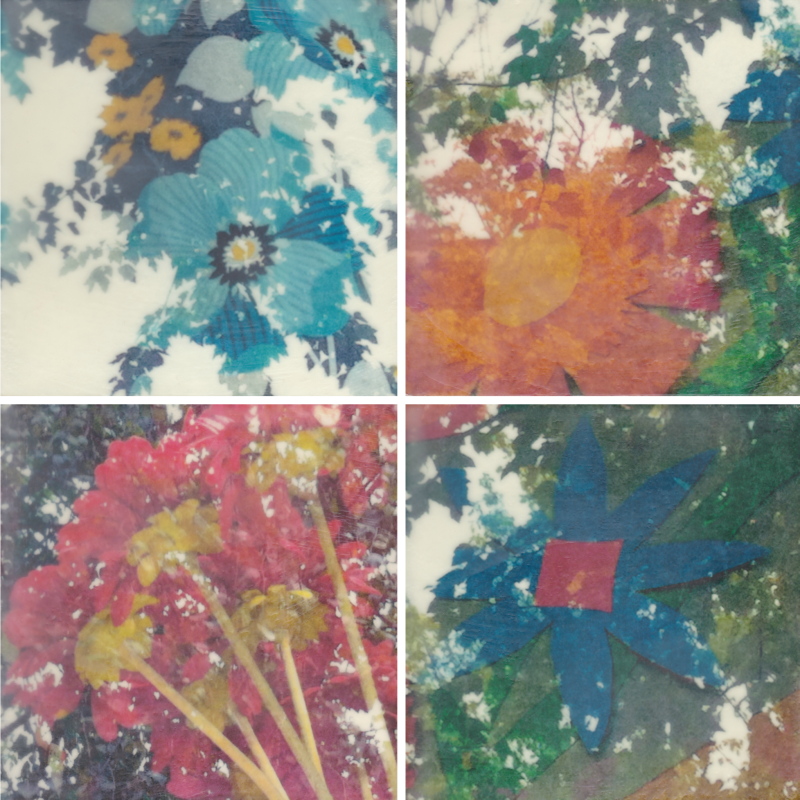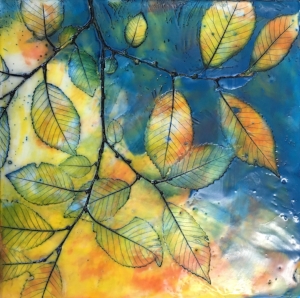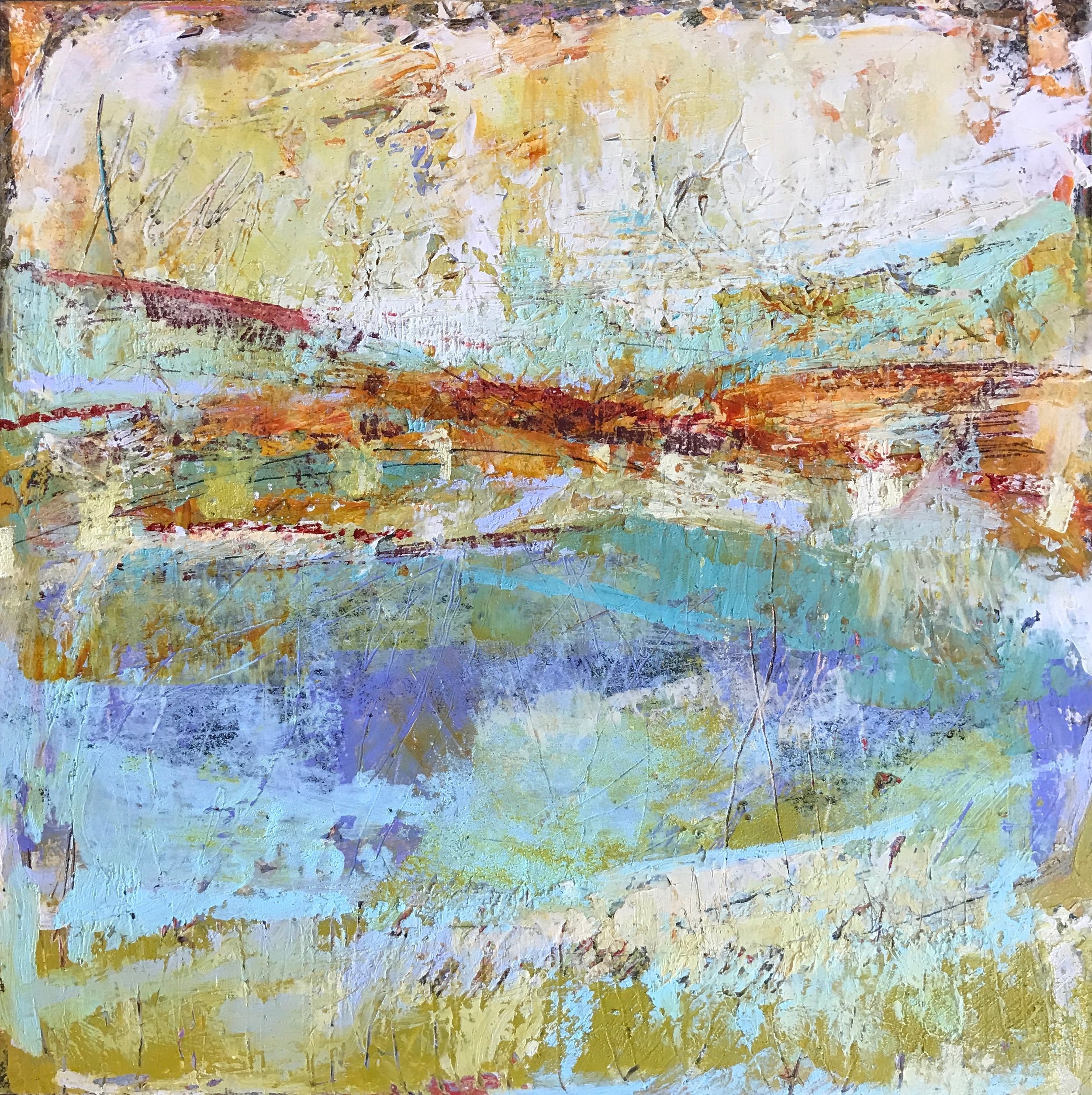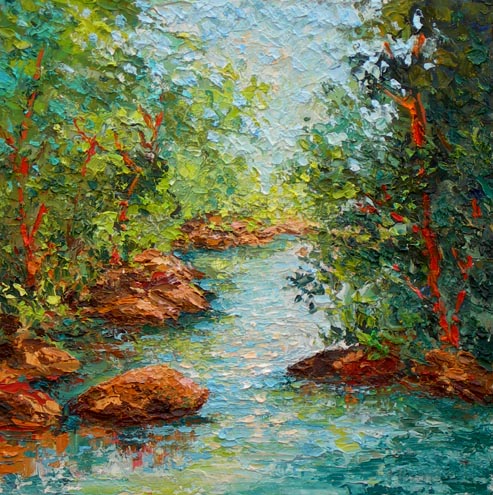Our fine art school for adults was founded in 2006 and is now the oldest independent school of its type in the WNC region. If that were not cause for celebration enough, every year we create new courses and learning opportunities, and this year, with the creative thinking of three of our resident artists, we have embarked on new projects and opportunities! Some of the new things happening are unusual, exciting and only found at 310 ART.
Nadine Charlsen, our Experimental Watercolor instructor nonpareil, created a new project that has taken artists on an exploration of paper and watercolor. “The Paper Project” is related to our extensive experimental watercolor program and supported by our friends at Cheap Joes who provided 11 different papers for each artist. The results have been a revelation. Ten artists, starting in a one-day workshop in June have worked all summer to paint a chosen subject on these different papers to see how the paint behaved and which surface they liked best. The results vary dramatically!! The project has captured the interest of several publications, including a national magazine, and will be published in 2020 as well as shared with other students at 310 ART.
Bridget Benton, our lead encaustic instructor, is offering one-on-one coaching sessions through 310 ART that blend her experience as an encaustic/mixed-media art instructor and author of the award-winning book on intuitive artmaking The Creative Conversation. A huge success, the coaching sessions focus on helping emerging artists find their unique creative voice, and support established artists in addressing blocks, slumps, or major style transitions. Benton says, "I love helping people make things. With the Finding Your Voice sessions, I want to help artists access their authentic creative voice whether they're just starting out or have been working for years as professional artists. Sometimes the pros need a chance to reconnect with their love of art making - something that can get lost when you're always making things to sell." Benton has expanded her home studio, which is very close to 310 ART, to accommodate this growing program, which also includes private and semi-private encaustic, eco printing and nature printing classes, giving more opportunities to schedule sessions.
Denise Markbreit, professional printmaker, joined 310 ART as a resident artist and instructor this year. In September she opened Asheville Print Studio just upstairs from the classroom at 310 ART, where she will teach of printmaking courses and private instruction in partnership with 310. A very special feature of this new studio is environmental and health consciousness with materials. Printmaking as long been associated with the use of toxic materials. Now, Denise has established the only independent green print shop in the region. Using safe soy and water-based inks and paints and no solvents has proven to be a healthy environment for artists of all ages wanting to learn. Some techniques include one of a kind prints, mixed media printmaking, fabric printing, solar plate, woodcut and wood lithography in her fully equipped studio. We are happy to announce we will be offering private printmaking classes and weekend workshops in the upcoming 2020 schedule.
310 ART is happy to announce the 2020 schedule now online at www.310art.com. Join us in our never-ending quest to learn more and create more. 310 ART, 191 Lyman St, #310, ground floor, also houses a large gallery that features the work of 20 local artists. Gallery hours M-Sat 11-5 and Sun 12-4, class times as scheduled.






